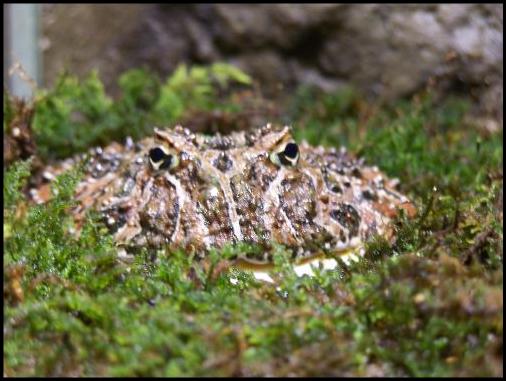



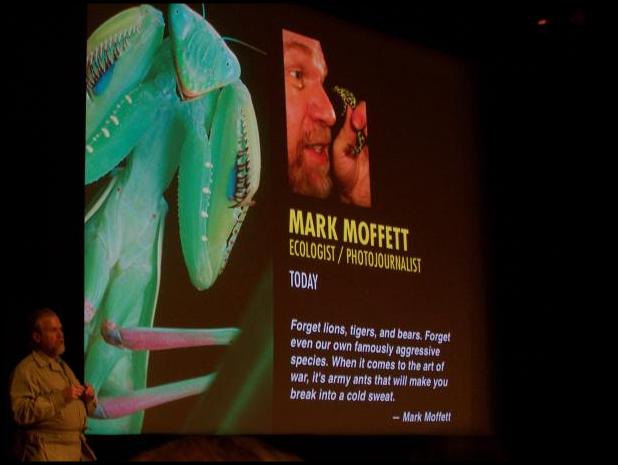
|
Today we went to the National Geographic Society Museum in Washington D. C. to hear Mark Moffett talk about his adventures filming and documenting unusual bugs and amphibians. It was a great lecture! His photos were absolutely amazing, and he has had some so incredible they were on the cover of National Geographic! The best part of his lecture to my darling daughter was that he spent a lot of time on her favorite subject: Frogs. |
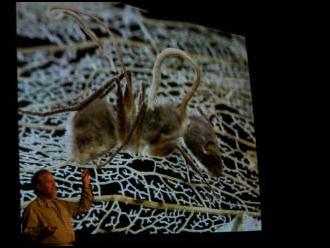
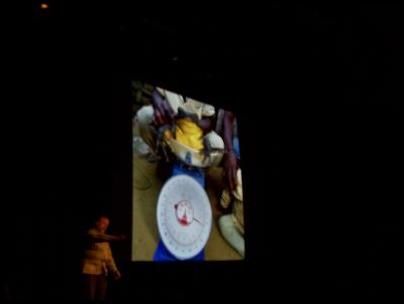
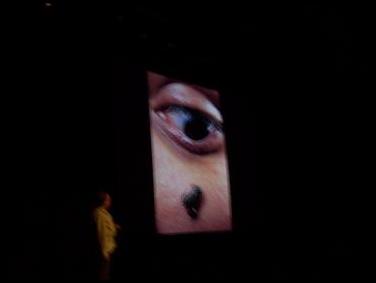
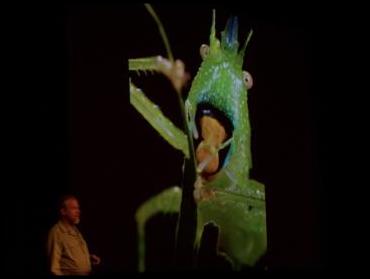
|
To the left, you see an ant that has a brain controlling fungus growing out of its head. According to Mark Moffett, the ant ingested some spore, which grows this type of fungus that attacks the brain of the ant. The ‘mind control’ causes the ant to climb up into this certain tree where the ant dies, and the fungus begins its life cycle again. W E I R D!!! |
|
Here are the largest frog and the smallest frog Mark had found. The largest weighed in at over 6.5 lbs. You see the smallest is much smaller than the man’s eye. Sorry, they are a little blurry. Surely with and SLR they’d have been clearer. |
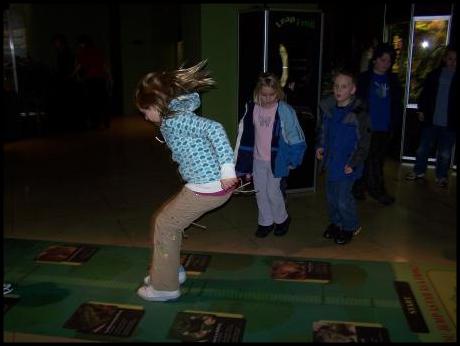
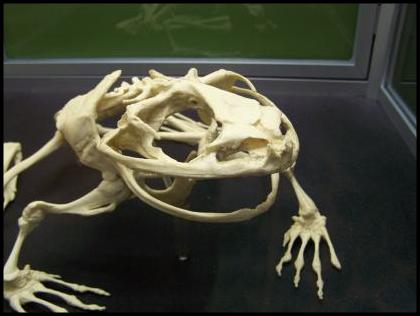
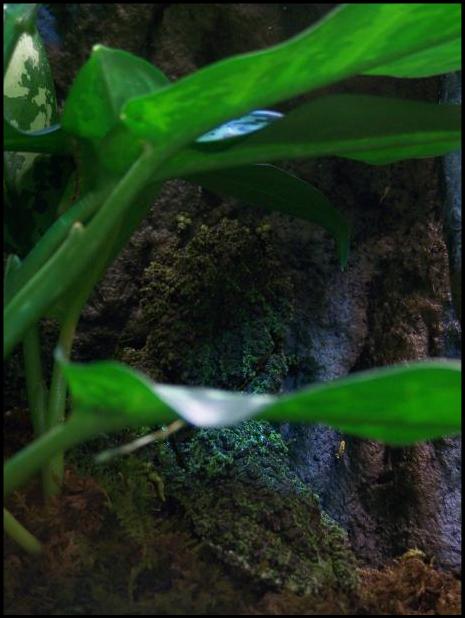
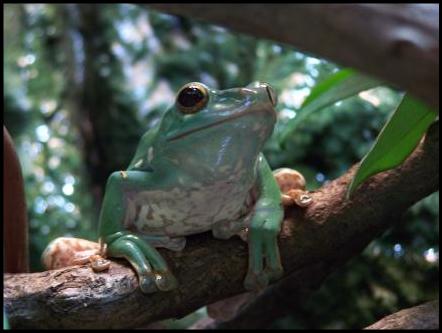
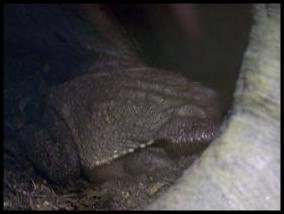
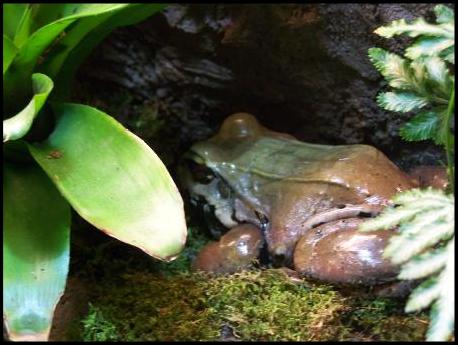
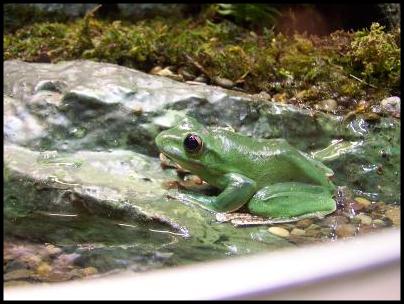
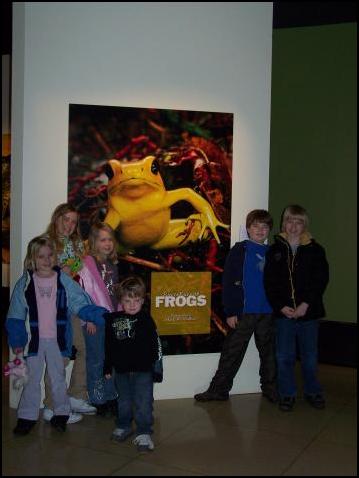
|
Afterwards, we enjoyed the frogs exhibit. They had lots of hands on things, and frogs from all around the world. Audrey loves to photograph frogs. These are the pictures she took. |
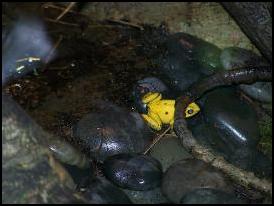
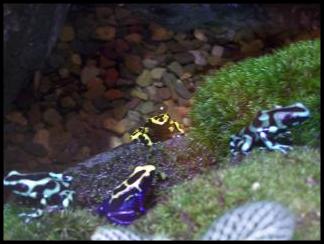
|
The poison on the back of this little yellow darling powers a poison dart for up to a year!! Don’t they look cute? They are called “Terribilis” for a reason! |
|
There are at least three frogs in the picture above. Can you find them?? |
|
Frog girl takes a leap! This mat tells which frog your jump is most like. Oddly enough, her jump was just like her favorite frog! Leopard frog! |
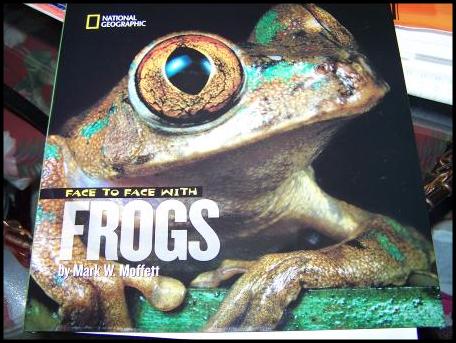
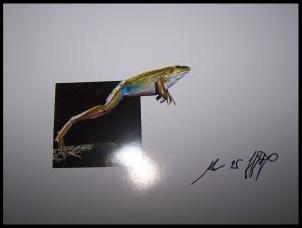
|
Here is Mark Moffett’s book which I scored by filling out a survey. It is a signed copy—and you all know how I am always jonesin’ for a signature! |
|
We learned a lot today! Here are some highlights!
Life in a nutshell: (I liked this, bc it was something we could study right here in Northern Va) there are complete ecosystems located inside of acorns! There is a beetle (acorn weevil-and you have to admit he’s cute!) who lays larvae inside these nuts, and they emerge fat and happy to become beetles again. Mice and squirrels both gather and hide nuts from eachother.
There are beetles around here (and we are going to try this) who are called burying beetles. They live off of the flesh from dead animals. They lay eggs on the corpse, and the larvae are fed by the mothers! These types of beetles also mate for life!
Jumping spiders see as well as humans...and eat mosquitoes! So, don’t stomp them.
In Puerto Rico, there is a popular tree frog called a Coqui. It had 15 minutes at dusk to climb into the trees (after the birds are asleep, and before the tarantulas wake up)—they stay up there and eat all night, but by dusk (where they have the same time frame in reverse) the take a short cut down—they jump! From the canopy above it looks like it is raining frogs. We all think this would be a cool place to be. (As long as the tarantulas are sleeping!)
Katydids hear with their feet. So, even if they are inches apart, but on different bushes, one cannot hear the other sing!!
This was my favorite photo in the exhibit by Mark Moffett. Click here to see Toad Haven had to say about the show!
|
